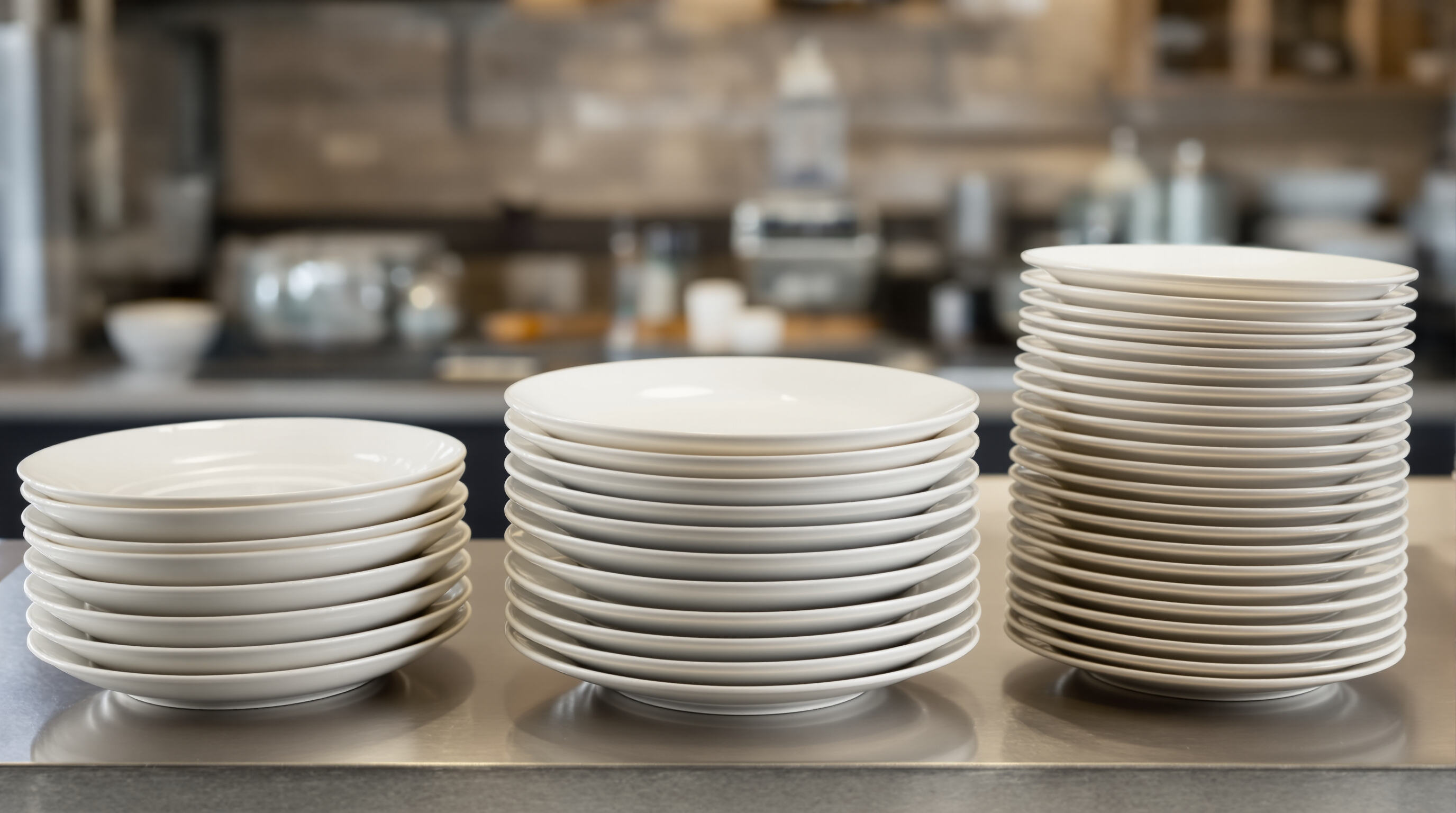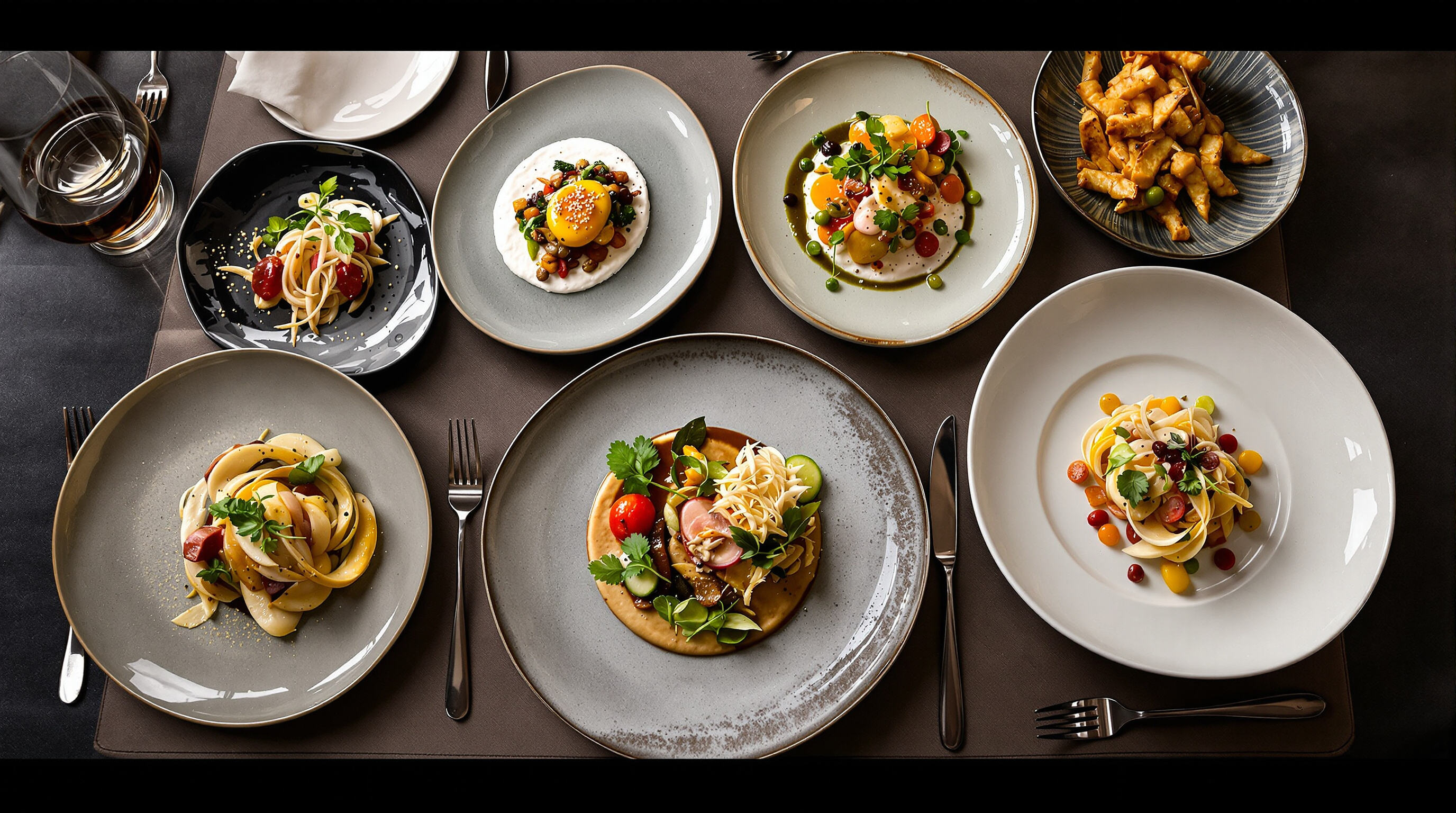News
How to Select the Right Tableware for Your Restaurant's Theme?
Understanding How Right Tableware Shapes Dining Experience and Ambiance
The Role of Tableware in Shaping Dining Experience
What we eat off of really does matter when it comes to our dining experience. Research from Cornell in 2023 showed something interesting about plates changing how we taste food. Just the color of the plate can make flavors seem stronger or weaker by around 20%. White porcelain tends to highlight subtle tastes, whereas those earthy looking stoneware plates actually make hearty comfort foods taste even better. There's also something about touching real ceramic versus cheap plastic melamine that makes people eat slower. Studies suggest folks take about 12% longer meals when using handmade ceramics, which leads them to savor their food more and generally enjoy themselves at the table.
How Tableware and Ambiance Are Interlinked
The materials we choose send subtle messages about environment and atmosphere. Matte finish stoneware really works well in industrial spaces because it feels authentic and grounded. Gold rimmed china catches candlelight beautifully in fancy restaurants though. According to a study from the National Restaurant Association back in 2022, places that match their tableware with interior design see around 18% better customer return rates. Round platters encourage people to gather together during meals, which makes sense for family style dining. On the flip side, those sharp edged plates fit right into modern minimalist spaces, helping reinforce whatever design theme the restaurant wants to project.
Case Study: Themed Café Using Vintage China to Enhance Nostalgic Ambience
A Parisian 1950s retro café tripled Instagram engagement after switching to mismatched floral china. Patrons spent 34% longer per visit, with 62% referencing “grandmother’s kitchen” nostalgia in reviews. The delicate clink of thin-edged teacups became an audio signature, demonstrating how sensory cohesion strengthens emotional connection and brand recall.
Aligning Right Tableware with Brand Identity and Aesthetic Values
Matching Plate Design to Brand Personality and Messaging
The dishes and plates at a restaurant actually speak volumes about what kind of place it is without saying a word. Take those farm to table spots - they often go for rough looking stoneware that feels handmade, something that screams local craftsmanship. But walk into an upscale sushi spot and suddenly everything looks super clean and precise, usually white porcelain that just oozes sophistication. The numbers back this up too. A recent NRA study from 2023 found around two thirds of customers link consistent tableware designs to how professional they think a restaurant is. Makes sense really when you think about it. When all the visual stuff matches what the menu promises, people just feel more confident about their dining experience.
Minimalist vs. Ornate Tableware: Impact on Brand Perception
Simple tableware with clean lines brings across a modern vibe and sense of openness, which works great for health conscious cafes or places with a techy feel. On the flip side, fancy patterns or metal touches scream luxury and fit better with brands that want to highlight extravagance. But going too complicated can backfire big time. According to some research from Gallup in 2024, nearly half (that's 42%) of people actually don't trust plates that look too fancy. Most folks prefer straightforward designs that seem purposeful and match what the restaurant is trying to say about itself.
Trend Analysis: Aesthetic-Driven Tableware in Urban B2B Dining Concepts
Corporate catering venues in cities are getting creative with what we're calling "chameleon tableware" these days. These are basically modular setups featuring neutral base colors but with accent pieces that can be swapped out depending on the event's theme or brand identity. The real advantage here is how easy it makes switching between morning boardrooms and night-time cocktail parties. Many businesses are now gravitating toward hybrid materials such as melamine with a matte finish combined with ceramic elements. Not only do these stand up better to constant use in busy business-to-business settings, they also look good enough for clients to notice without breaking the bank on replacement costs after every function.
Evaluating Material and Durability for Long-Term Use of Right Tableware

Selecting durable tableware directly impacts operational costs and guest experience, with U.S. restaurants reporting 40% lower replacement expenses when using high-quality materials.
Comparing Ceramic, Porcelain, Opalware, and Melamine for Restaurant Use
Ceramics have that classic look many people love, though they tend to chip easily when dropped. Porcelain has this vitrified structure that just doesn't chip as much, which explains why it lasts longer in busy kitchens. Opalware stands out because it doesn't get cloudy even after going through thousands of dishwasher cycles, so hospitals and schools often prefer it for their tableware needs. Melamine dishes won't break if knocked over, making them great for picnic tables or kid's areas at cafes. But watch out with hot food items since melamine can't handle anything hotter than around 130 degrees Celsius. A recent industry report from last year showed that porcelain is roughly 30 percent denser than regular ceramic materials, giving restaurant owners another reason to switch when dealing with constant dishwashing demands.
Durability and Maintenance: Stoneware vs. Tempered Glass
Stoneware’s 3.5mm thickness provides strong resistance to impact from heavy cutlery, though its weight may contribute to staff fatigue during extended service. Tempered glass items show 60% longer lifespan than standard glass in commercial dishwasher tests but require pH-neutral detergents to prevent etching and maintain clarity.
Functional Design: Weight, Stackability, and Kitchen Efficiency
Plates under 1.2 lbs (540g) reduce wrist strain during service, especially in high-volume settings. Standardized 10.5” diameter plates allow 25% more efficient stacking in drying racks compared to mixed sizes, improving kitchen workflow. Rolled rims prevent nesting in bowls, streamlining storage and retrieval.
Enhancing Food Presentation Through Strategic Selection of Right Tableware

Large Plates vs. Portion Psychology: Balancing Visual Appeal and Value
The size of plates really affects how we see food and what we feel about our meal. Big 12 inch plates look impressive when serving food, but according to research from Cornell back in 2023, people actually report feeling more satisfied with their meals on smaller 10 inch plates. Something about the ratio between the food and plate just feels better somehow, apparently boosting satisfaction levels around 22 percent. At those greasy burger places, oval shaped plates are everywhere these days because they sort of remind customers of those familiar fast food containers, making everything taste bigger somehow. On the flip side, fancy restaurants often go for tiny 8 inch bowls for their delicate dishes. These little bowls turn simple bites into something special, drawing all attention to the colors, textures, and how carefully each component was prepared. It's amazing how something as basic as plate size can completely change our dining experience without us even realizing it.
Integrating Right Tableware with Interior Design and Social Media Appeal
Harmonizing Tableware with Décor for a Cohesive Atmosphere
Good tableware does more than just hold food it actually connects what's on the plate with how the room looks. When plates match the walls or serving dishes go well with the furniture texture, about two thirds of people who eat there think they're getting something special according to the Hospitality Design Report from last year. Think about earthy stoneware sitting nicely on a wooden table in a country style restaurant versus shiny porcelain looking great against metal surfaces in modern settings. Restaurants that get this right tend to build stronger brand recognition because everything looks cohesive when customers walk in. The details matter for creating that memorable dining atmosphere.
Creating Instagrammable Moments: How Aesthetic Tableware Drives Engagement
Instagram-worthy tableware boosts social media visibility by 40% for restaurants (Food Visual Marketing Institute). Top-performing venues prioritize:
- Contrast-rich surfaces, such as dark plates for light dishes
- Textured materials that interact dynamically with natural lighting
- Custom-shaped serveware that frames food like edible artwork
These elements encourage sharing, with 61% of diners aged 18–34 posting tableware-focused content online. Cafes using pastel-toned matte ceramic drinkware, for instance, have leveraged latte art presentations to generate organic viral marketing.
FAQ
What impact does tableware have on dining experience?
Tableware significantly influences the dining experience by affecting how we perceive flavors, encouraging slower eating with materials like ceramics, and enhancing overall meal enjoyment.
How does tableware align with restaurant themes and ambiance?
Aligning tableware with restaurant themes and ambiance can improve customer return rates and satisfaction, as it enhances the environment's coherence and reinforces design themes.
Which tableware materials are most durable for restaurant use?
Porcelain is highly durable due to its vitrified structure, while opalware maintains clarity even after extensive dishwashing. Melamine is break-resistant but unsuitable for hot foods beyond 130 degrees Celsius.
How can tableware enhance food presentation?
Strategic selection of plate shapes, sizes, and colors can complement cuisines, creating visually appealing and memorable dining experiences. Empty plate space, contrast, and proportion are key factors.
Why is tableware important for social media engagement?
Aesthetic tableware can increase social media visibility and engagement, as visually appealing designs encourage diners to share their experiences online.
 After-Sales:
After-Sales:
 EN
EN
 AR
AR
 HR
HR
 NL
NL
 FI
FI
 FR
FR
 DE
DE
 EL
EL
 HI
HI
 IT
IT
 PT
PT
 RO
RO
 RU
RU
 ES
ES
 TL
TL
 ID
ID
 SL
SL
 VI
VI
 ET
ET
 MT
MT
 TH
TH
 FA
FA
 AF
AF
 MS
MS
 IS
IS
 MK
MK
 HY
HY
 AZ
AZ
 KA
KA
 UR
UR
 BN
BN
 BS
BS
 KM
KM
 LO
LO
 LA
LA
 MN
MN
 NE
NE
 MY
MY
 UZ
UZ
 KU
KU









